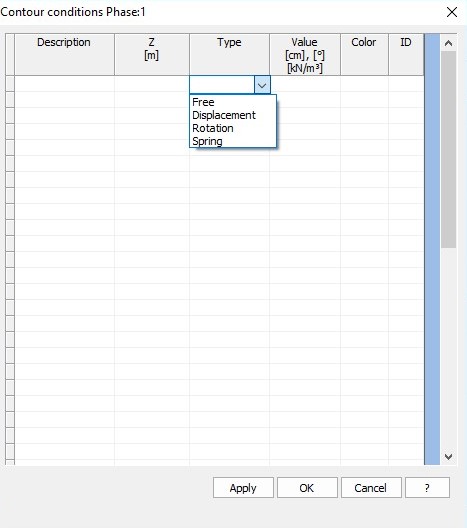In some situations there can be conditions – on the displacements, rotations or springs – which must be respected beforehand in the calculation procedure. In this case, we refer to an imposition of the boundary conditions. The software allows managing the boundary conditions in the following window:

•Description: Identifies the boundary condition to be imposed by means of a name.
•Z: Expressed in m. It is the depth at which to impose the boundary condition.
•Type: It is the type of condition to be imposed. In SPW, the following boundary conditions can be managed:
oFree: Through this condition, you can impose the node at z level to be free and consequently by no means bound.
oDisplacement: expressed in m. It is possible to impose – for a certain depth (z) – the displacement to be equal to the imposed one.
oRotation: expressed in degrees. It is possible to impose – for a certain depth (z) – the rotation of the elastic line of the bulkhead to be equal to the imposed one.
oSpring: It is possible to insert a spring at the z depth which simulates an elastically yielding bound.
•Value: It is the value of the imposed boundary condition. The unit of measurement to be taken into consideration is the one associated to the type of imposed condition (cm for displacement, degrees for rotations, kN/m³ for the spring).
•Color: Color to be used for the display of the possible imposed condition.
•ID: It is the index which identifies univocally the imposed boundary condition.
© GeoStru